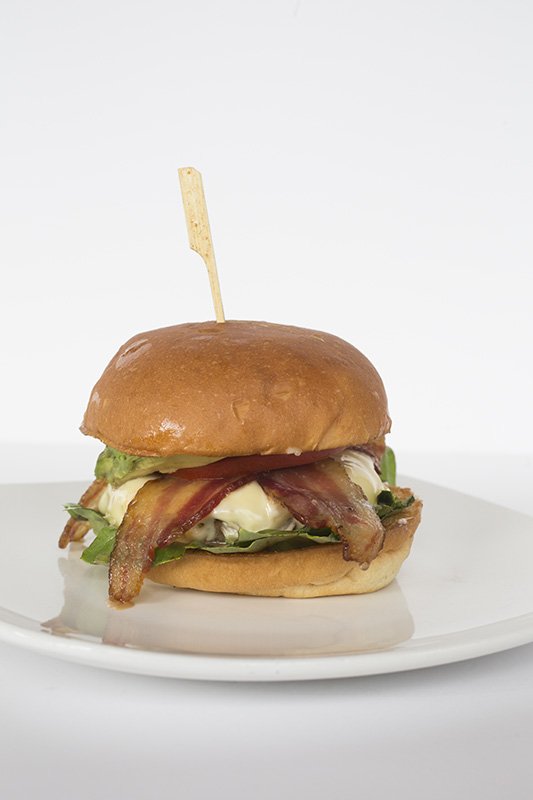Putting together the perfect burger may fall to personal preference, but there are some basic rules we all must follow to keep things on the right track. Bacon and avocado may be optional, but these tips are not. Check out what a few local experts say makes their burgers stand out:
toppings
“Try to keep it simple. I go for mustard, ketchup, lettuce, pickles and cheese. You want to put the cheese on after you’ve flipped the patty, while it’s still on the grill cooking so that it melts. We have just about anything you’d want on the menu: bacon, bell peppers, chili, jalapenos, nacho cheese, mayo, grilled onions. We had one guy who ordered sauerkraut on his burger one time, and that surprised me. I wouldn’t go for that.”
—Stephen Booth, Asher Dairy Bar
bun
“The buns we use at Big Orange are a combination of brioche and challah. It’s a little fluffy and airy with a buttery flavor that works well with everything you put on it. You want something fresh from a bakery, not the plain white-bread bun. Arkansas Fresh Bakery makes our buns, and you can buy their stuff at the Hillcrest Farmers Market. Of course, I always think buttering and toasting them is better.”
—Aaron Morrissey, Big Orange Midtown
meat
“You want about an 80-20 burger, which means 20 percent fat. Ground chuck is what we sell at H.A.M., [but] sometimes we get a crazy request for ground rib-eye that people will turn into burgers. At $21 per pound, that’s an expensive burger. I also really like lamb burgers for a change of pace. We do a four-to-one ratio of lamb to beef.”
—Brandon Brown, Hillcrest Artisan Meats
cook time
“The best thing you can do in terms of cooking the burger is to keep as much moisture as you can away from the patty. Keep it in the fridge and away from humidity until you’re ready to cook. That keeps the patty firm and the fats solid. When you pull it out, pat it dry with a paper towel and season on both sides. I like to keep my grill as hot as it can possibly get. The first side, I’ll leave for four to five minutes for an 8-ounce burger until the exterior is super dark and crunchy. Then you’ll flip it and cook another four minutes or so. If you press into the burger and see red juices, you’re probably around a rare or medium rare burger. If you press in and moisture comes out that’s not red, you’re probably somewhere around a medium. When you pull the burger off, you have to let it sit for four to five minutes before you cut into it at all. That allows the fat and juices to re-absorb into the muscle tissue. When you bite into a hot burger and the juice goes everywhere, that’s a sign that it hasn’t rested. You want the burger to re-absorb that and be moist but not dripping.”
—Michael Campbell, White Water Tavern
